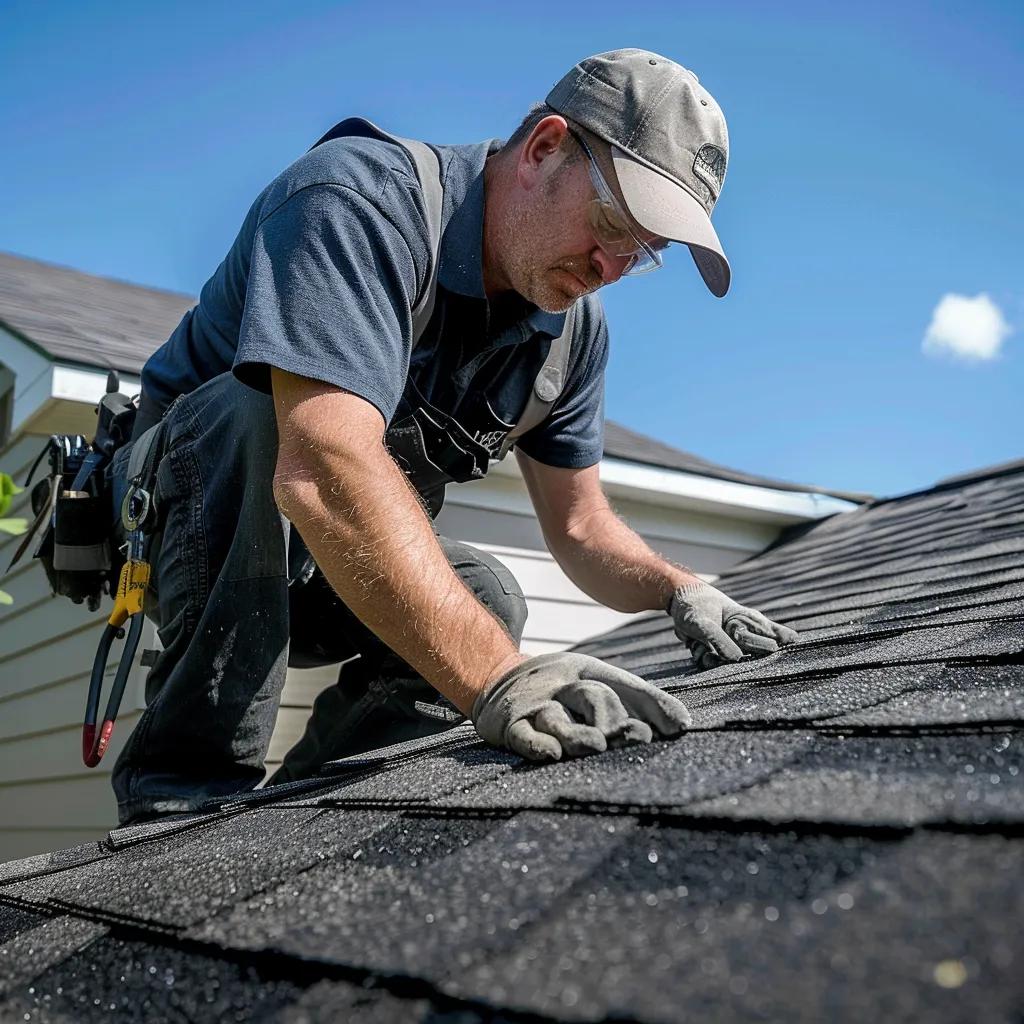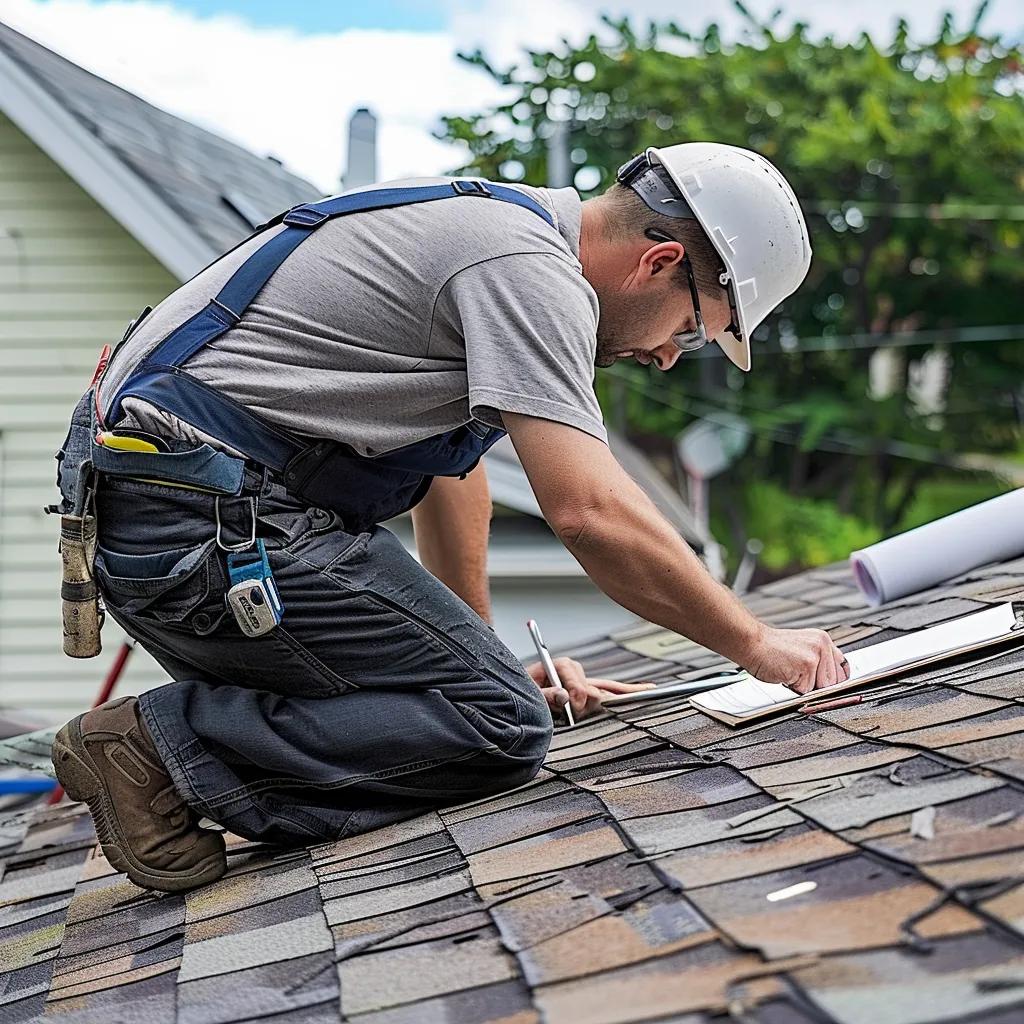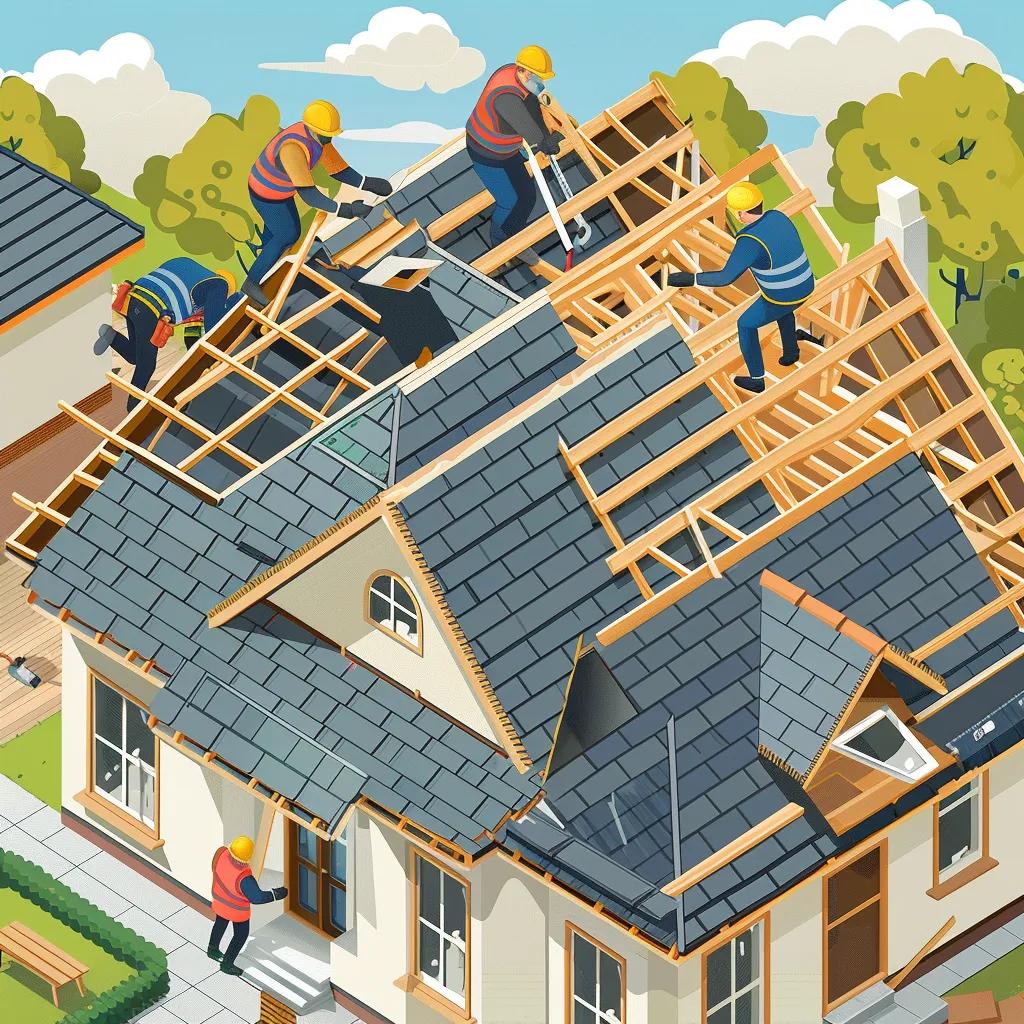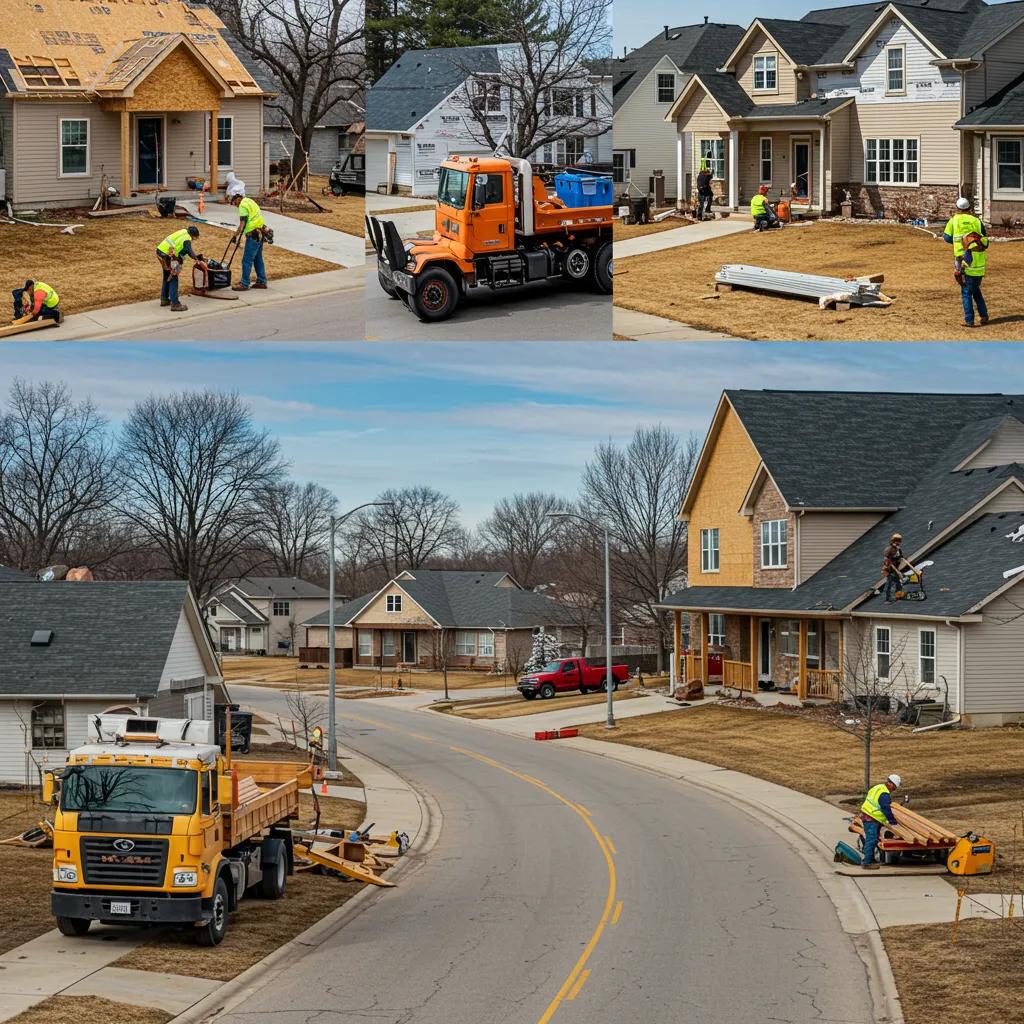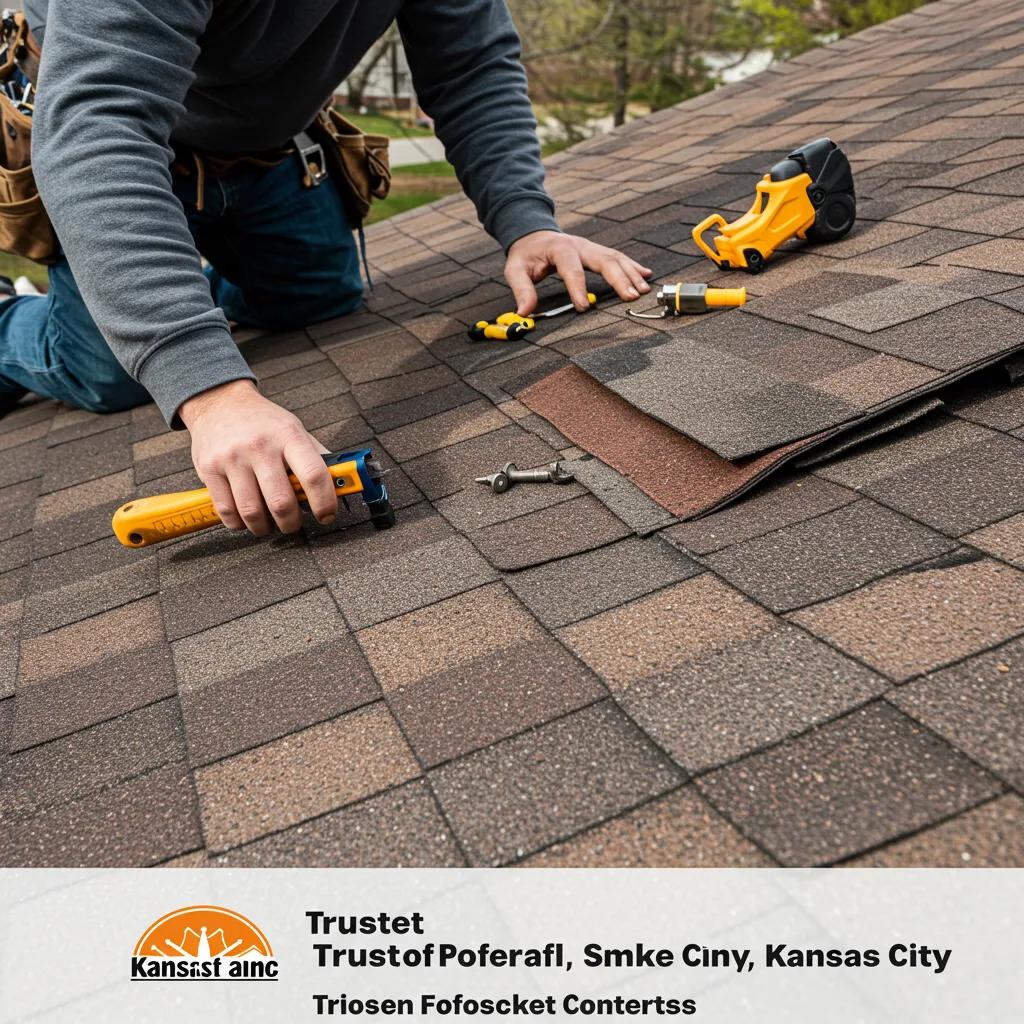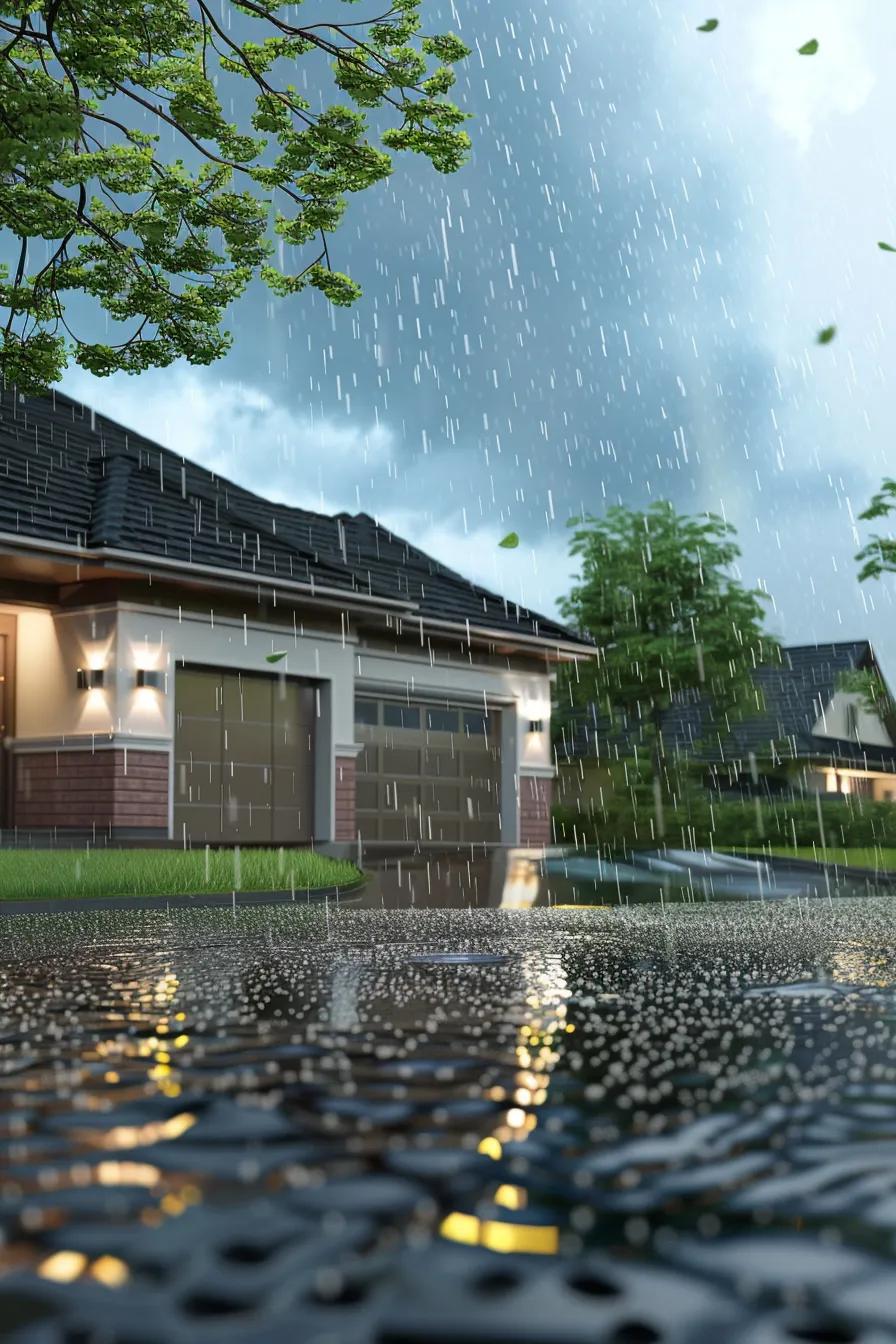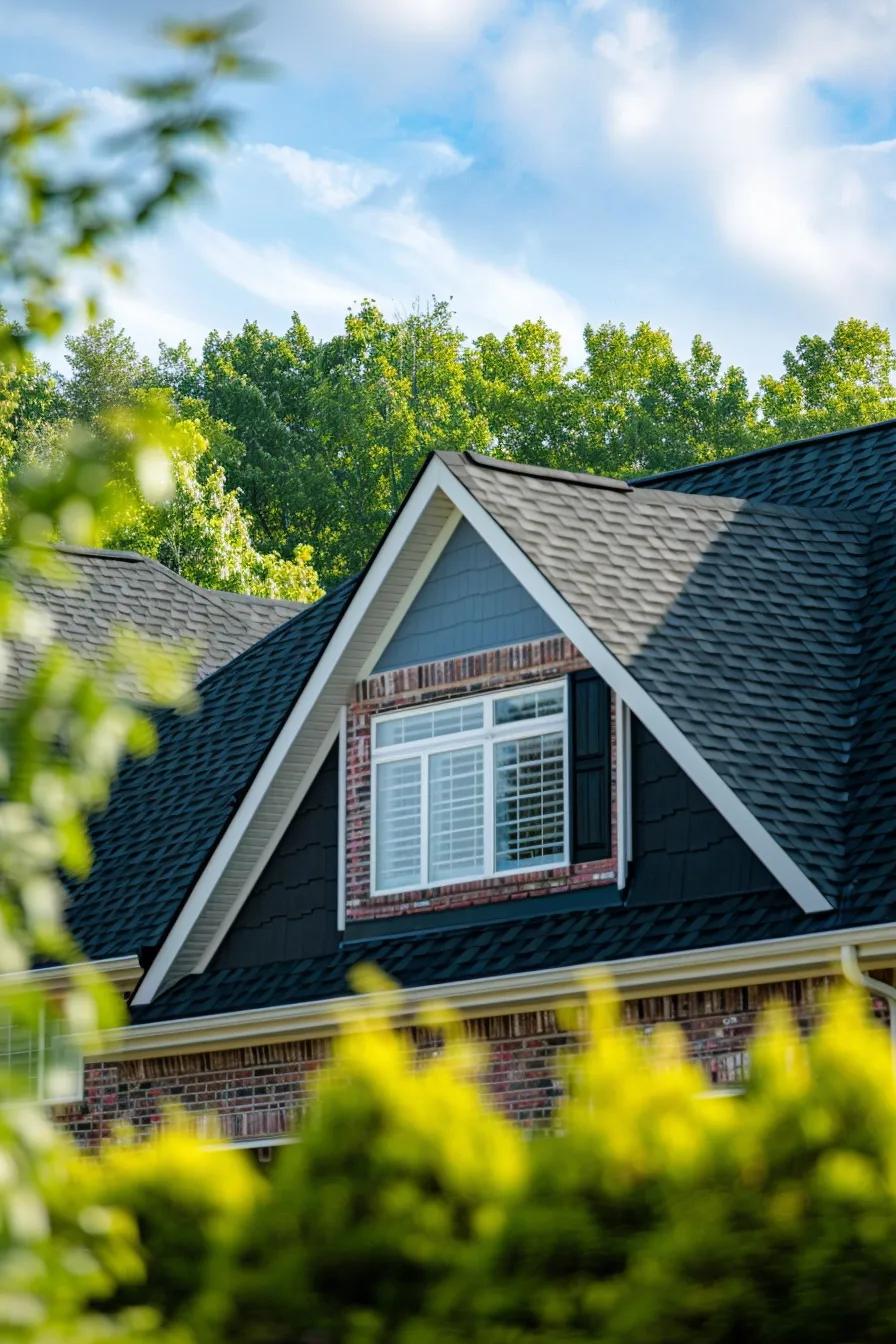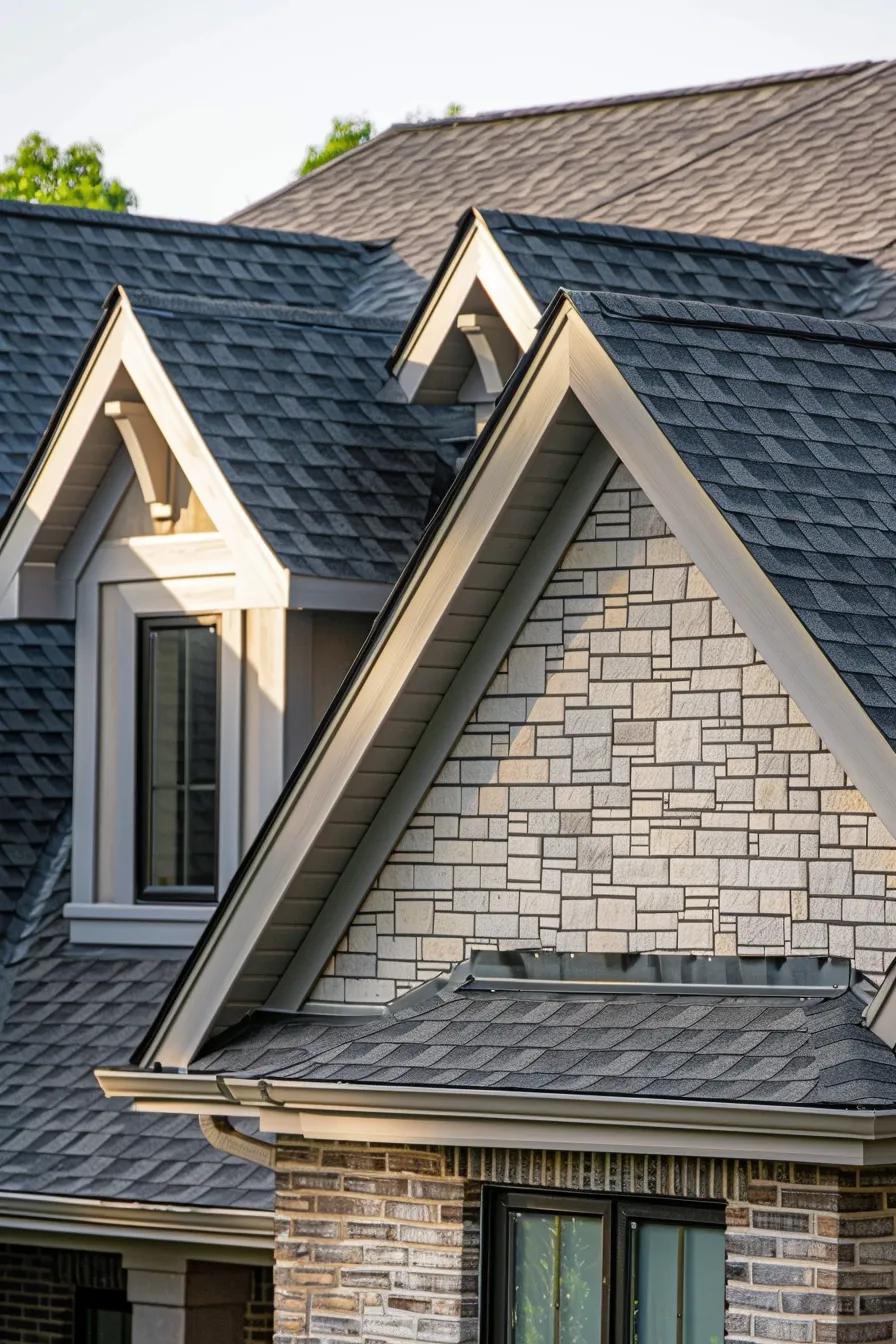How to Choose the Best Local Roofing Contractors in Kansas City: A Complete Homeowner’s Guide

Hiring a local roofing contractor is one of the most important investments a homeowner can make — it affects safety, resale value, and long-term upkeep costs. This guide walks Kansas City homeowners through checking credentials, comparing detailed estimates, and choosing materials that handle our weather. You’ll find practical steps to verify licenses and insurance, clear explanations of manufacturer certifications like GAF and Owens Corning, and a simple method for reading line-item roofing bids. The guide also covers reputation checks, material choices tailored to Kansas City’s hail and wind exposure, and a contract checklist to avoid surprise costs. Finally, we show how a trustworthy local provider brings manufacturer certifications and a whole-house approach to exterior work. Read on for step-by-step actions, handy comparison tables, and decision checklists to help you hire a reliable roofer with confidence.
Why Is Choosing the Right Local Roofing Contractor Important?
Picking the right local roofing contractor matters because roofing affects your home’s structure, weather resistance, and future repair bills. A qualified local contractor knows municipal codes, common weather-related issues like hail and wind, and installation practices that protect warranties and resale value. Proper installation lowers the chance of leaks and repeated repairs; poor work can void manufacturer warranties or cause costly callbacks. In Kansas City, local experience is especially valuable for timely hail-damage work and selecting materials proven to perform in this climate — helping you avoid unexpected costs and protect insurance outcomes.
What Risks Do Homeowners Face with Unreliable Roofers?
Unreliable roofers can create financial, safety, and legal headaches that only show up after the project starts. Typical problems include missing permits, inadequate insurance, improper tear-off that harms decking, and poor flashing or fastening that leads to leaks. Those issues can expose homeowners to liability for injuries, void material warranties, and shorten a roof’s usable life. Insist on written proof of permits and insurance, and document the contractor’s cleanup, permit handling, and warranty promises to lower your risk and improve accountability.
How Does a Trusted Roofing Contractor Protect Your Home and Investment?
A trusted contractor protects your home with a thorough inspection, certified installers, code-compliant work, and written warranties that preserve homeowner protections. A good provider will inspect decking, underlayment, flashing, and ventilation, then explain when repair makes sense versus replacement. Certified crews follow manufacturer specs that keep warranty coverage intact and reduce future leak risk. Transparent contracts spell out materials, labor, tear-off, and cleanup. That disciplined approach gives more predictable performance, better resilience to hail and wind, and preserved property value.
What Are the Essential Credentials to Verify Before Hiring a Roofing Company?
Verifying credentials gives homeowners objective proof of competence, insurance coverage, and warranty support. Essential items to check include a current local contractor license where required, general liability and worker’s compensation insurance, manufacturer certifications (for example, GAF or Owens Corning), and reputable public ratings like the Better Business Bureau or HomeAdvisor. Confirming these before signing reduces the chance of out-of-pocket liability, ensures installations meet manufacturer standards, and provides paths for dispute resolution. Below is a short verification checklist and a table explaining what each credential actually means for homeowners.
- Request a certificate of insurance and confirm policy limits.
- Ask for proof of local licensing or registration and record license numbers.
- Confirm manufacturer certifications and ask how they affect warranties.
This quick checklist helps you separate broad claims from verifiable protections and gives you follow-up questions for estimate comparisons.
What Does Being a GAF Certified Contractor Mean for Quality and Warranty?
GAF certification shows a contractor completed manufacturer training and follows GAF installation standards — a key factor for accessing certain manufacturer-backed warranties. For homeowners, a GAF-certified installer often means eligibility for extended or enhanced warranties that cover materials and, in some cases, workmanship. Certification also signals crews trained on GAF products, installation sequences, and required underlayments that reduce leak risk and improve longevity. Ask which GAF warranty tiers the contractor offers and request paperwork so you can check real warranty value and transferability.
How Does Owens Corning Preferred Contractor Status Benefit Homeowners?
Owens Corning Preferred status identifies contractors who meet the brand’s standards for workmanship, business practices, and product knowledge — which can translate to stronger warranty support and smoother claim handling. Preferred contractors usually complete training, follow installation guidelines, and have a track record Owens Corning can reference during warranty review. For homeowners, that increases the chances warranty terms are honored and that installers use best practices for product compatibility and ventilation. Always verify claimed status and ask to see the specific warranty documents.
| Credential / Certification | What it Proves | Homeowner Benefit / Warranty Implication |
|---|---|---|
| License or Local Registration | Legal authorization to perform roofing work in your area | Reduces risk of code violations and fines; shows formal business registration |
| General Liability Insurance | Coverage for property damage during the job | Protects you from costs if the contractor damages your property |
| Worker’s Compensation | Coverage for on-site worker injuries | Prevents homeowner liability for employee injuries |
| GAF Certified Contractor | Meets manufacturer training and installation standards | Access to specific GAF warranties and proper product installation |
| Owens Corning Preferred | Meets manufacturer quality and business criteria | Better warranty support and aligned installation practices |
How Can You Evaluate Roofing Company Reputation and Reviews in Kansas City?

Evaluating reputation means more than star ratings — look for patterns, recent activity, and local project examples that match your job. Solid signals include steady recent reviews across several platforms, a photo portfolio with project dates, references from nearby clients, and third-party verifications like a BBB A+ rating. Cross-check platforms and ask for local references to avoid relying on a single review. Doing that surfaces how a contractor handled warranty items and season-critical repairs. The tips below show where to find trustworthy reviews and how to read them.
- Google reviews — useful for volume and recent homeowner feedback.
- Better Business Bureau — shows complaint history and resolutions.
- HomeAdvisor and similar networks — helpful for project matching and lead verification.
After checking these sources, contact at least two references and ask about communication, cleanup, schedule reliability, and warranty follow-through to confirm online impressions.
Where to Find Reliable Kansas City Roofing Company Reviews and Testimonials?
Start with multiple platforms and prioritize recent local jobs that include photos. Google reviews show volume and dates; the BBB shows complaint trends and resolution; HomeAdvisor and similar services can confirm project matches and lead verification. Local neighborhood groups or community forums often contain detailed homeowner stories and before/after photos that clarify workmanship. Use search terms with neighborhood names plus phrases like “roof repair” or “hail damage” to surface similar jobs and confirm a contractor has completed comparable work nearby.
What Are the Signs of a Reputable Roofing Company?
Reputable roofers communicate clearly, provide written contracts, offer verifiable warranties, and maintain a portfolio of recent local work with references. Other green flags include a named project manager, documented safety procedures, itemized estimates, and manufacturer partnerships that support warranty transfers. Red flags include high-pressure sales, requests for large upfront payments without lien waivers, missing permits, or refusal to show insurance documents. Use these signs to narrow your list before scheduling on-site estimates and asking for documented proof.
What Should You Expect in Roofing Estimates and Contracts?

A homeowner-focused estimate separates materials, labor, tear-off, disposal, permit fees, and warranty terms so you can compare bids fairly. A solid contract spells out scope of work with material specs, a project timeline, a payment schedule tied to milestones, change-order procedures, cleanup responsibilities, and explicit warranty documentation for both manufacturer and workmanship coverage. Comparing line items helps you spot omissions like missing underlayment or flashing replacement and highlights bids that are unusually low because they left out key work. The table below explains common estimate elements, what they include, and red flags to watch for.
- Request itemized estimates with materials and labor listed separately.
- Compare permit handling and disposal fees across bids.
- Confirm warranty documents are attached or referenced in the contract.
These steps help you normalize bids and choose the contractor offering real value — not just the lowest upfront price.
| Estimate Element | What it Includes | How to Evaluate / Expected Range or Red Flags |
|---|---|---|
| Materials | Shingles, underlayment, flashing, vents, fasteners | Verify brand and model plus warranty; unspecified materials are a red flag |
| Labor | Crew hours, installation method, supervision | Expect a clear line item; very low labor costs can indicate shortcuts |
| Tear-off & Disposal | Number of layers removed and dumpster costs | Confirm whether decking inspection and minor repairs are included |
| Permits | Local permit fees and handling | Contractor should secure permits — you should not be left with fines |
| Warranties | Manufacturer and workmanship coverage | Ask for written warranty terms and any transferability limits |
How to Understand and Compare Roofing Estimates Effectively?
Normalize bids by matching material quality and warranty levels first, then compare labor, tear-off, and permit inclusions to see true value. Ask each contractor to describe the exact brand/model, underlayment, ventilation plan, and fastening pattern — these details affect lifespan. Beware low bids that skip decking inspection or leave cleanup vague; those often lead to higher costs later. Get written, itemized estimates and use a side-by-side comparison to spot where cheap up-front prices cut essential scope.
What Key Elements Must Be Included in a Roofing Contract?
A protective roofing contract lists the scope, materials by brand and model, exact start and completion dates, a payment schedule tied to milestones, change-order procedures, and warranty paperwork that explains how claims are handled. Important protections include lien release language after payments, clear cleanup responsibilities, and a dispute-resolution clause. Avoid vague promises like “work to satisfaction” without measurable criteria or final inspection steps. Require manufacturer warranty documents to be attached or referenced so you can claim under product guarantees if needed.
Which Residential Roofing Materials Are Best for Kansas City Homes?
Choose materials based on cost, durability, hail and wind resistance, and curb appeal — all important for Kansas City’s climate, which sees occasional severe hail and seasonal wind. Asphalt shingles are the most common economical choice, familiar to installers and offering good value. Metal roofing delivers superior durability and hail resistance at a higher upfront cost and is a strong option for homeowners focused on long service life. Tile and composite products offer long-term style and longevity but require structural checks and a larger investment. The table below compares material attributes to help match options to priorities across the Kansas City metro.
| Material | Durability / Cost | Climate Suitability | Warranty / Typical Outcome |
|---|---|---|---|
| Asphalt shingle (e.g., Timberline) | Moderate durability / lower cost | Performs well in typical wind; moderate hail resistance | Warranties vary by product and installer certification |
| Metal roofing | High durability / higher cost | Excellent wind and hail resistance; sheds water well | Long service life when properly fastened and underlayment is correct |
| Composite/tile | Very durable / high cost | Exceptional longevity; heavy — structural check required | Long manufacturer warranties if installed to spec |
What Are the Pros and Cons of Asphalt Shingles, Metal, and Tile Roofing?
Asphalt shingles are affordable, easy to install, and come in many styles, but they have a moderate lifespan and can take more damage in severe hail. Metal roofing offers top durability and hail resistance and often lowers long-term maintenance, though it costs more upfront and behaves differently for noise and thermal movement. Tile and composite roofs provide exceptional longevity and visual appeal but need a structural assessment and specialised installation. Choose the material that fits your budget, long-term goals, and curb-appeal preferences.
How Do Trusted Brands Like Timberline, DaVinci Roofscapes, and CertainTeed Impact Quality?
Brand choice affects product testing standards, available warranty tiers, and installer training required for full warranty coverage. Reputable brands test for hail, wind, and UV exposure and often require certified installation to validate extended warranties. Pairing a known brand with a certified installer aligns product performance with correct installation — the combination that determines real-world lifespan and homeowner protection. Always ask which brands the contractor installs, whether they’re certified, and to see warranty paperwork that matches your chosen product.
How Does Ryan Construction Systems Inc. Stand Out Among Kansas City Roofing Contractors?
Ryan Construction Systems Inc. is a local example of the credentials homeowners should look for in the Kansas City Metro Area. As a roofing and home remodeling contractor serving Gladstone, Liberty, North Kansas City, Overland Park, Parkville, Platte Woods, Riverside, and Shawnee, the company emphasizes manufacturer partnerships and a Whole House Concept for exterior projects. Public credibility markers include GAF Certified Contractor and Owens Corning Preferred status, plus a Better Business Bureau A+ rating and HomeAdvisor approval — signals of manufacturer alignment and steady business practices. Homeowners can use these credentials as a model when verifying other contractors and, if interested, request a free, transparent roofing estimate from Ryan Construction Systems Inc.
- GAF Certified Contractor and Owens Corning Preferred status show trained installation and warranty support.
- An A+ BBB rating and HomeAdvisor approval give added third-party confidence.
- Services include residential roofing, siding, gutters, windows, room additions, and focused hail-damage repair.
Together, these points show how manufacturer partnerships, warranty alignment, and local coverage form a reliable basis for choosing a Kansas City exterior contractor.
What Are the Advantages of Choosing a GAF Certified and BBB A+ Rated Contractor?
Choosing a contractor with GAF certification and a BBB A+ rating gives you layered trust signals: manufacturer-backed installation standards plus a public record of business transparency and complaint handling. GAF certification implies required training and adherence to installation sequences that protect warranty eligibility. A BBB A+ rating suggests fewer unresolved complaints and a commitment to good customer service. Verifying both certifications and public records gives homeowners a clearer picture of reliability and post-installation support.
How Does the Whole House Concept Improve Your Home’s Efficiency and Curb Appeal?
The Whole House Concept coordinates roofing with siding, gutters, windows, and trim so exterior systems work together for better performance and curb appeal. Integrated planning reduces repeat trades visits, ensures compatible flashing and materials, and simplifies timelines and warranty coverage across systems. This approach can improve insulation performance, enhance water management, and produce a cohesive look that boosts resale appeal. Homeowners gain single-point accountability for multiple exterior components and clearer warranty responsibility.
How Can You Get a Free Roofing Estimate from Ryan Construction Systems Inc.?
To request a free roofing estimate, gather recent photos of the roof, note any recent storms (hail or wind), and have basic property details ready (roof pitch, visible issues, and preferred materials). Contact Ryan Construction Systems Inc. using the contact options on their site to schedule an on-site inspection. During the visit, the estimator will review decking, underlayment, flashing, and ventilation, then provide a transparent, itemized estimate showing materials, labor, tear-off, permit handling, and warranty terms. Expect explanations of material options, warranty differences, and a projected timeline so you can compare this estimate with others effectively.
- Prepare clear photos and notes about visible damage before the visit.
- Ask the estimator to provide a written itemization and warranty paperwork.
That process gives you a clear baseline for comparison and a documented estimate that aligns with the contract protections described earlier.
Industry groups like the NRCA and ARMA offer helpful guidance for homeowners choosing a new roof.
NRCA and ARMA Guidelines for Homeowner Roof Selection
Both the Asphalt Roofing Manufacturers Association (ARMA) and the National Roofing Contractors Association (NRCA) publish guidelines to help homeowners choose a new roof. Class A, fiberglass-based asphalt shingles make up a large share of the U.S. residential market, and a Class A-rated roofing system remains a strong option compared with wood shingles and shakes.
Frequently Asked Questions
What Should Homeowners Look for in Roofing Material Durability?
Prioritize durability that fits local weather. In Kansas City, roofs must stand up to hail and strong winds. Asphalt shingles are cost-effective but can be more vulnerable in severe hail; metal performs very well for hail resistance and longevity; tile and composite products last long but require a structural check. Consider expected lifespan and warranty terms to choose the best value for your needs.
How Can Homeowners Ensure Their Roofing Contractor is Insured?
Ask for a certificate of insurance that lists general liability and worker’s compensation limits, and verify it with the insurer. This document protects you if accidents or damage occur during the project. Also ask about any past claims and how they were resolved to better understand the contractor’s track record.
What Are the Benefits of a Written Warranty from Roofing Contractors?
A written warranty gives legal protection and peace of mind about workmanship and materials. It spells out what’s covered, for how long, and under what conditions. Review warranty length, exclusions, and what actions might void coverage so you know what to expect if problems arise.
How Can Homeowners Prepare for a Roofing Estimate?
Prepare recent roof photos, notes on visible damage, the roof’s approximate age and pitch, and any past repairs. Having this information ready helps the estimator give a more accurate visit and ensures your concerns get addressed during inspection.
What Should Homeowners Do if They Encounter Issues After Roofing Installation?
Start with the warranty paperwork the contractor provided. Document issues with photos and written notes, then contact the contractor to request an inspection. If the contractor won’t respond or resolve the problem, escalate to local consumer protection agencies or consider legal options — but keep records of all communications.
What Are the Common Red Flags to Watch for When Hiring a Roofing Contractor?
Watch for high-pressure sales, requests for large upfront payments without lien waivers, and refusal to provide written estimates or warranty documents. Be cautious if a contractor lacks verifiable references, a physical business address, or operates under multiple business names — these can signal instability or risk.
How Can Homeowners Verify a Contractor’s Reputation Effectively?
Check multiple review platforms like Google, the Better Business Bureau, and HomeAdvisor for consistent feedback, focusing on recent reviews and project specifics. Ask for direct client references and call them to ask about communication, cleanup, and warranty follow-through. A few targeted checks give you a clear, well-rounded view of reliability.
Conclusion
Choosing the right local roofing contractor in Kansas City protects your home, your budget, and your peace of mind. By checking credentials, comparing itemized estimates, and understanding material options, you can make a confident decision that delivers long-term satisfaction. If you’d like an estimate, request a free inspection from a trusted local provider and get a clear, documented plan for your roof. Start today — a secure, attractive roof is within reach.





